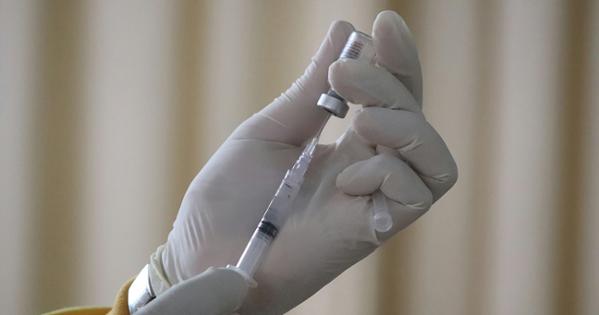American University
International
Q&A: Current Global Access to the COVID-19 Vaccine

It has been more than three years since the first COVID-19 vaccine received emergency use authorization by the US Food and Drug Administration in December 2020. Since that time, the US has seen the emergence and approval of several other COVID-19 vaccines and distributed hundreds of millions of doses to populations across the nation.
But what about other countries? What is the status of COVID-19 vaccine access around the world? To gain greater clarity on the status of global vaccine access, we asked SIS professor Nina Yamanis a few questions.
- What is the status of COVID-19 vaccine access globally?
- As of April 13, 2024, 70.6 percent of people globally had received at least one dose of a COVID-19 vaccine. In low-income countries (LMICs), however, only 32.7 percent of people had received one dose. Approximately 5.18 billion people have completed the initial COVID-19 vaccination protocol.
- High and upper middle-income countries have much higher COVID-19 vaccine doses administered per 100 people, compared to lower middle-income and low-income countries, according to data tracked by Our World in Data.
- Based on this data, we can see that doses administered per 100 people are:
-
- 227 in high-income countries (i.e. if you divide by 100, you get 2.27, meaning that people have had at least 2 vaccine doses)
- 215 in upper middle-income countries
- 144 in lower middle-income countries
- 45 in low-income countries (not even 100 doses per 100 people, showing that many people have not received even one dose yet)
- In Tanzania, where I conducted research on COVID-19 vaccinations, only 49% of people have completed the COVID-19 vaccination initial protocol.
- Was the global rollout of COVID-19 vaccines equitable—both in the United States and around the world?
- The global rollout of COVID-19 vaccines was not equitable. There was a significant delay in the rollout of COVID-19 vaccines to low- and middle-income countries (LMICs) (Khairi et al, 2022). Obstacles to rollout included high-income country hoarding, which resulted in high prices for vaccines, and a lack of local vaccine manufacturing (Privor-Dumm et al, 2023). Low-income countries received vaccines from the COVID-19 Vaccines Global Access (COVAX) Facility, and bilateral deals including China and Russia (Massinga-Loembe et al, 2021). Nevertheless, there were challenges in delivering the donated vaccines as some were short-dated and the supply of donations was unpredictable. Moreover, vaccines had cold chain requirements that were difficult to deliver in remote areas, and health systems in some low-income countries were weak or stretched thin (Bishop et al, 2023). Scholars have concluded that relying on donations to vaccinate entire populations in LMICs is not a sustainable strategy (Privor-Dumm et al, 2023). To make vaccination delivery in low- and middle-income countries (LMICs) more sustainable and equitable, scholars (Privor-Dumm et al, 2023; Massinga-Loembe et al, 2021; Khairi et al, 2022) have argued that the intellectual property and technology for vaccine development should be transferred to low-income countries and that we should increase the capacity of LMICs to manufacture their own vaccines.
- What inequities exist when it comes to access to the COVID-19 vaccine and other life-saving vaccines?
- As others have written about, access to vaccine doses is not enough. Compared to high-income countries, LMICs do not have the equivalent capacity to scale up production of traditional and new vaccine technologies. With the COVID-19 vaccine, the G7 countries did not provide enough mRNA doses to LMICs and did not facilitate technology transfer of mRNA vaccines to LMIC vaccine producers. Going forward, vaccine producers in LMICs must be supported. The technology transfer to vaccine producers in LMICs needs to be facilitated, as well as improved capacity for regulatory management.
- GAVI published a report on key lessons learned from their efforts to support COVID-19 vaccination. They acknowledged that it is imperative to strengthen and support vital routine immunization programs against deadly diseases (e.g. measles, polio, yellow fever, rotavirus, etc.). Integration of COVID-19 vaccination into primary healthcare for adults will require more efforts, as only 5 out of 47 countries in the African region have adult vaccination programs (Wouters and Williams). According to WHO and the World Bank, strengthening routine immunization programs should include more training of vaccination workers, funding, planning, community efforts to overcome vaccine hesitancy, and developing an adequate regulatory system for vaccination. Countries should also be prepared to surge vaccination efforts for healthcare workers, managers, and other frontline employees early on in future pandemics.
- Even though there are regular vaccine updates, is vaccine hesitancy still an issue? Which countries or regions are most affected by vaccine hesitancy?
- According to a multi-country study published in 2022, the COVID-19 vaccine was considered acceptable by 79.1% of the respondents, up from 75.2% in 2021. However, vaccine hesitancy increased in eight countries, including Turkey, Mexico, China, Brazil, the UK, South Africa, Ghana, and Kenya. Another article published in 2022 suggested that LMICs in Africa and Asia experience widespread antivaccine propaganda and disinformation about COVID-19 vaccines (Davis et al 2022). In our own research in Tanzania, an East African country of about 60 million people, we found that political, health system, and community factors contributed to vaccine hesitancy. We recommend that LMICs invest more resources in training and engaging "street-level" public health officials to mitigate mistrust, overcome misinformation, and engage communities in COVID-19 vaccination efforts.
